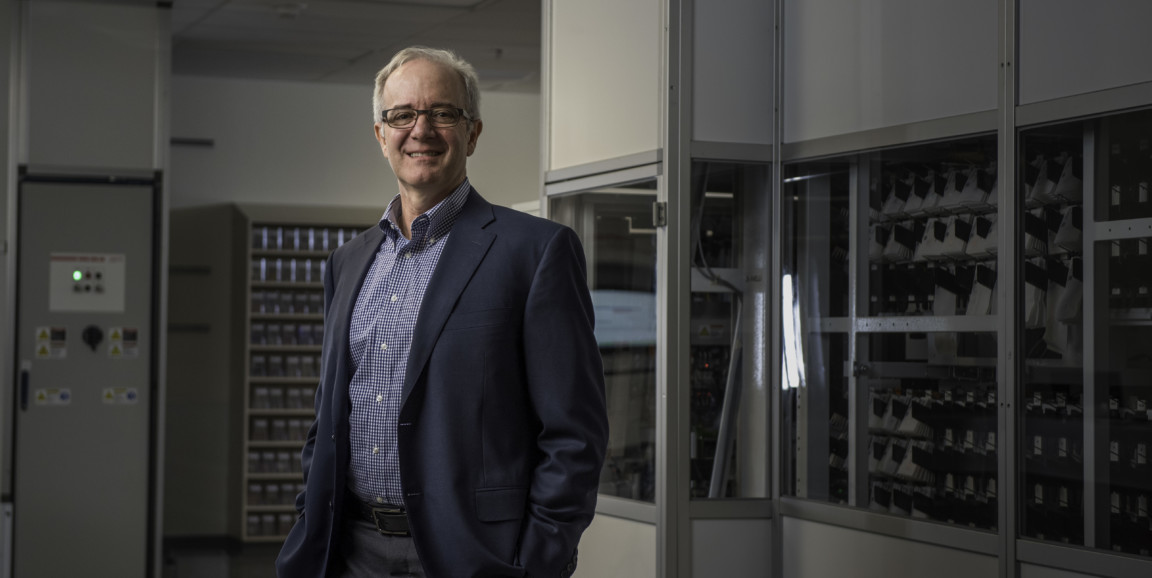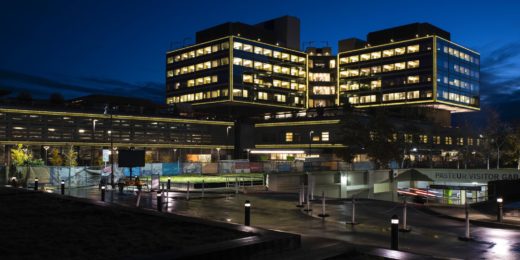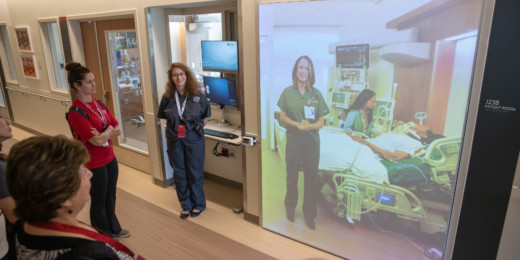When you consider the fast pace of technological advances today, you wonder how do you go about building a new hospital and keep the technology relevant for 10, 20 or even 50 years? I put that question to Stanford Health Care's technology wiz Gary Fritz in this 1:2:1 podcast. He told me:
"We try to do something we call future-proof the hospital. We tried to make design decisions and technology decisions that allow us to move to the current or the next generation technology as easily as possible."
So what does that actually mean when you think about infrastructure? He explained:
A simple example would be copper and fiber wires. When you're putting wires in a new facility, it's easier to put in many more than you need that moment because putting them in 5 years from now or 10 years from now is quite hard. Something like 85 percent of our copper wires and fiber optic cables are dark right now because we know we're going to need them in the future.
Since the new Stanford Hospital is a setting to treat, cure and educate, I also wanted to know how technology will impact the patients. How, for example, will technology enhance the patient experience at the new Stanford Hospital? The MyHealth app, Fritz told me, plays an important role.
We have a Stanford developed MyHealth app that allows our clinicians currently in the outpatient setting to connect with the patient, communicate with them about their issues, their concerns, and their health status. As they come into the hospital, they continue to use MyHealth, our tool.
"They can see," Fritz told me, "their electronic health record and what is happening now and what will happen next."
Patients often complain about the onslaught of noises in the room from technology -- buzzers, bells, alerts and alarms -- that interrupt sleep and can alter recovery and healing. I asked Fritz how the new Stanford Hospital addresses those intrusions.
One important one is reducing the amount of noise from alerts and alarms. Things like infusion pumps and vital sign monitors often go off. When you look at the published data, something north of 80% of those alarms are not clinically important. They are advisory only. It disrupts the patient healing process.
What we've done with some of our technology is connected that alarm and alert management to... an iPhone that has a specialized application on it.
The alarm that in the new Stanford Hospital that goes off in the patient's room can be dismissed or escalated from the phone directly, which eliminates the need for the nurse, or aide, or someone else to walk into the room, press the button and then address the issue.
We can address it very quickly.
So a few days before the hospital is open for patient care, I asked Fritz, what is he most excited about?
This is a team sport on a grand scale... The singularity of focus to get through every challenge, whether it's design, or it's construction, or it's licensing, or it's discovering new systems that need to be put in, configuring them properly. There was this wonderful can-do attitude. It's amazing to sustain that over years.
Photo by Kevin Meynell






